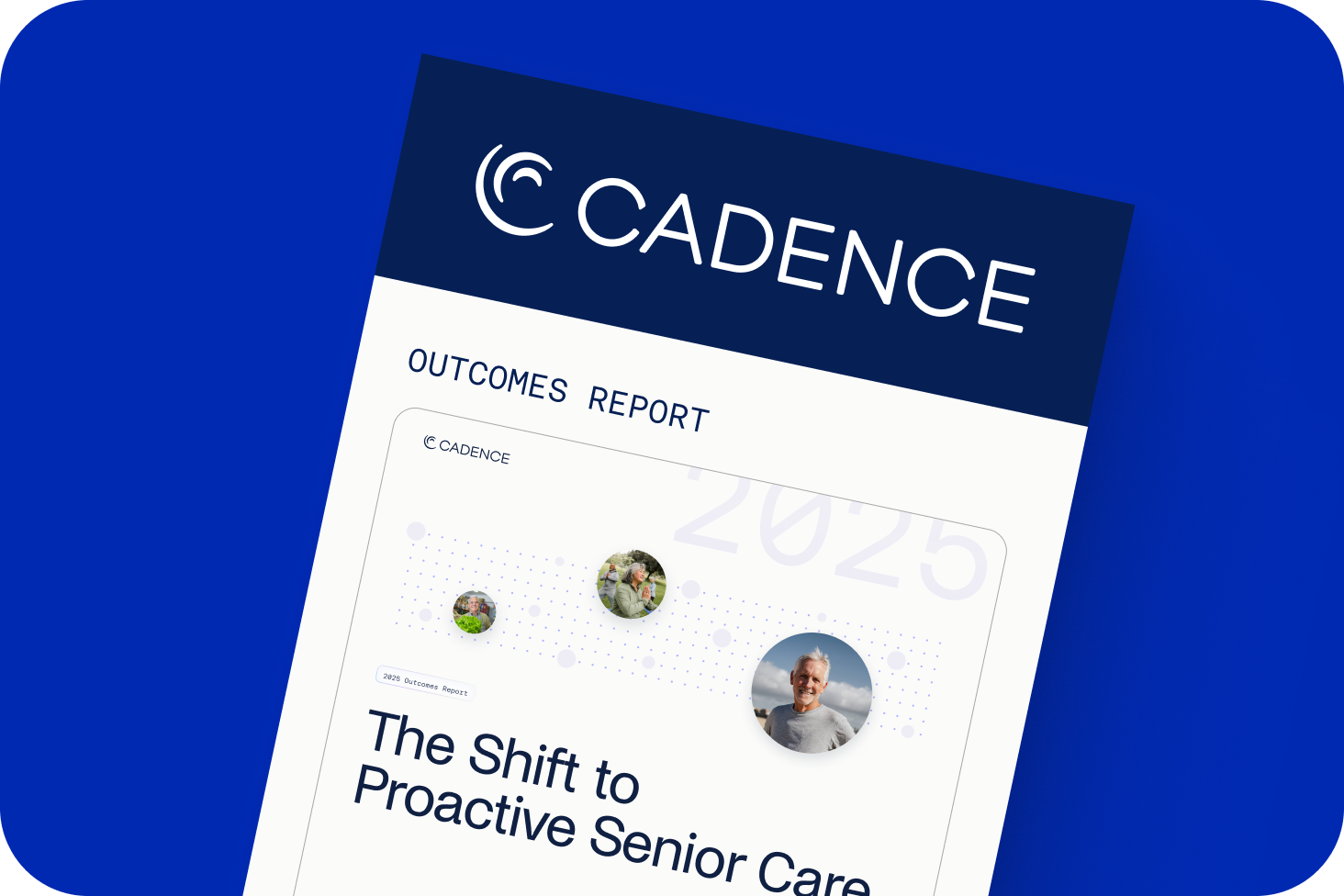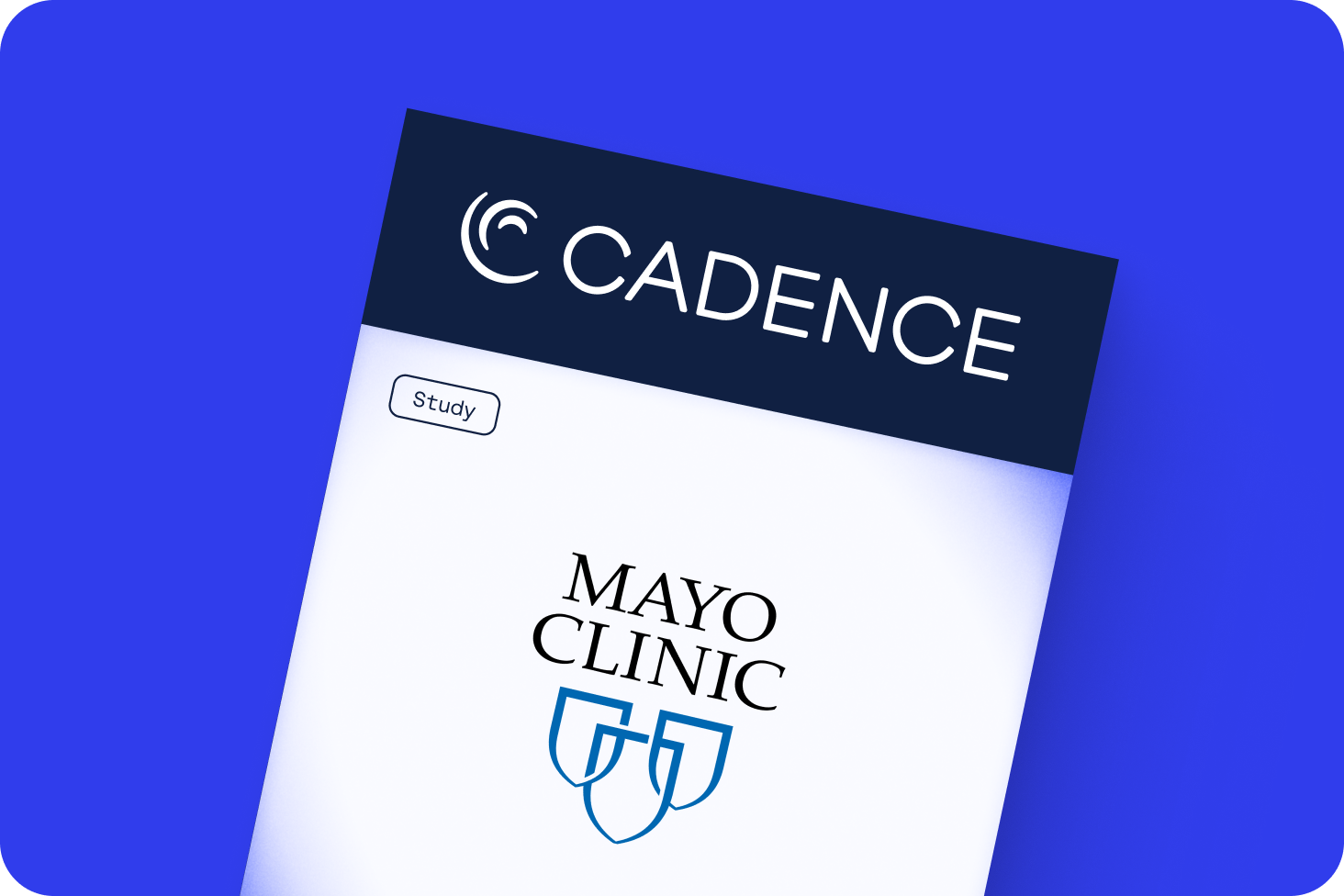New Cadence data show improved outcomes for heart failure patients


Program leveraging remote patient monitoring and guideline-directed medical therapy addresses gaps in care for at-risk patient population
New York, NY (Oct. 3, 2022) – Today, health technology company Cadence unveiled initial clinical data from patients with heart failure with reduced ejection fraction (HFrEF) showing improved clinical outcomes, including increased use of guideline-directed medical therapy (GDMT). GDMT is a treatment that saves and improves the quality of lives for patients with heart failure.
Presented as an oral abstract at the 2022 Heart Failure Society of America’s (HFSA) Annual Scientific Meeting, Cadence’s medical and data science team presented the results of a study of 97 comorbid patients with advanced heart failure (New York Heart Association Class II and III). The patients were enrolled in Cadence’s remote patient monitoring (RPM) and intervention program and were followed over the course of three months in two cardiology clinics in North Carolina.
As part of Cadence’s program, patients use a cellular-enabled blood pressure cuff, heart rate monitor and weight scale to measure their vitals daily. Cadence’s multidisciplinary clinical team monitors these vitals and leverage technology-enabled clinical protocols to implement guideline-directed clinical interventions to patients at home. The interventions are designed to facilitate symptom, vital and medication optimization for patients with heart failure.
Cadence’s clinical team successfully increased the use and dose of GDMT, and in doing so, helped significantly lower patients’ blood pressure and stabilized other important congestive heart failure-specific vitals. Data strongly supports the use of all four pillars of GDMT — including angiotensin receptor inhibitors, beta blockers, mineralocorticoid receptor antagonist and sodium glucose co transporter 2 inhibitors — for all patients with heart failure with reduced ejection fraction to improve clinical outcomes and quality of life.
Specific highlights from the abstract include:
- A 5.5x increase in the percentage of patients on all four pillars of GDMT at follow-up (39%) compared to baseline (7%).
- A 1.5x increase in the percentage of patients on mineralocorticoid receptor antagonist (MRA) at follow-up (65%) compared to baseline (42%).
- A 3x increase in the percentage of patients on sodium glucose co transporter 2 inhibitors (SGLT2i) at follow-up (53%) compared to baseline (18%).
- A significant increase in the percentage of patients on >50% target dose of GDMT for each pillar other than beta blockers.
“Daily monitoring allows us to safely and effectively titrate patients’ GDMT, which has historically been incredibly difficult for clinicians caring for heart failure patients at home. Using Cadence’s remote patient intervention solution, we have been able to successfully optimize patients’ GDMT regimen by starting or up-titrating GDMT until all four pillars are prescribed at maximally tolerated doses,” said Dr. David Feldman, medical advisor at Cadence, and first author of the HFSA abstract. “This represents a big step forward in helping to control patients' heart failure and keeping them out of the hospital and at home.”
Since publication of the HFSA abstract, Cadence data has also revealed improved clinical outcomes for congestive heart failure patients, including a 50% reduction in frequency of patients visiting the emergency room (1). While 98% of Cadence’s patients say they are receiving the highest quality medical care in a way that is easy for them to understand.
“The clinical findings surrounding the implementation of the RPM platform are very encouraging and speak to the effectiveness of Cadence’s program,” said Dr. Marat Fudim, an advanced heart failure specialist and cardiologist at the Duke University Medical Center, and senior author on Cadence’s HFSA abstract. “This program demonstrates the ability to titrate medications at a high rate, at a fast pace, and to achieve high doses of life-saving heart failure medications in a short time frame using RPM. I’m confident that the healthcare of the future will center around this and other RPM augmented approaches.”
Since launching in 2020, Cadence has quickly become one of the largest RPM and virtual care platforms for health systems in the U.S. The company is now providing remote patient monitoring and intervention for patients with congestive heart failure, hypertension and type 2 diabetes in Alabama, Arkansas, Michigan, North Carolina, Virginia, Washington, and Wisconsin.
“This data shows how Cadence’s technology and clinical solution can be transformational for patient care, setting patients battling chronic conditions on the path to a healthier, longer life,” said Dr. Theodore Feldman, chief medical officer at Cadence, and senior author on the HFSA abstract. “Widespread implementation of Cadence’s solution can help change the trajectory for patients with heart failure.”
Read the complete report in the Journal of Cardiac Failure.
1- Based on an early cohort of CHF patients enrolled in Cadence. The number of unique patients who visited the emergency room declined by 50%; the number of unique patients with emergency room visits is normalized for patient tenure in the program.






